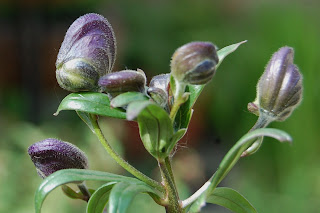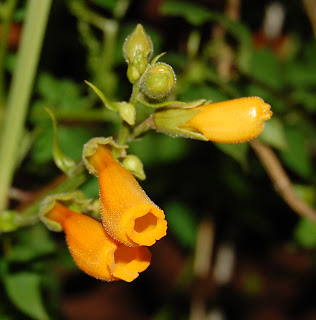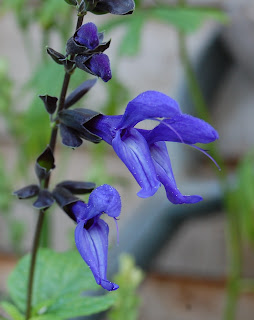This second (part one is
here) and final part about our climbers kicks off with a very hardy Clematis....
Personally, I'm not a great lover of Clematis, but this one has always been there (hence, I don't know it's name), but it blooms prolifically in the early summer. The flowers are about 60/70mm in size.
Rhodochiton atrosanguineum (Purple Bell vine) is far too tender to survive outside in the UK winter. The good news is that it usually makes it through if placed in an unheated garage, shed or greenhouse and kept dry. It's also very easily grown from the seeds that it produces plenty of.....
I'm lucky enough to have three Sollya heterophylla, two in blue and one of the white form. Sollya is the old name, the "new" one being Billardiera heterophylla (why do they have to keep doing this). The common name is Bluebell Creeper.....
This has a vigorous growth habit, but once again is too tender for our winters. Mine come into the conservatory for the winter where they continue to grow well. But, and it's a big but, they're very susceptible to the dreaded red spider mite.
Eccremocarpus scaber (Chilean Glory flower) is thought of as tender over here, but I've always found it to be anything but! Another plant which is very easily grown from the masses of seeds that it produces.
If it has one drawback, it is that it grows very quickly indeed and will need to be trimmed or tied up as you require on a regular basis.
Here in the UK, Gloriosa superba is thought of as an exotic, which seems odd to me as it's so easy!
Chuck the tubers into fresh soil (in a pot) March time, water in and place in the conservatory or greenhouse. Give it something to climb up, water only as it gets to the point of starting to wilt and that is it. I withdraw water in September and allow it to dry out fully, before putting it in a cupboard for the winter and repeating the whole process again the following spring.
Hopefully, this time next year I should have a few more to show off. I have some Allamanda seeds on the way, hopefully Plumbago too. And in January, a friend is off to India and has promised to return with some Thungergia grandiflora seeds. I can't wait!






















































